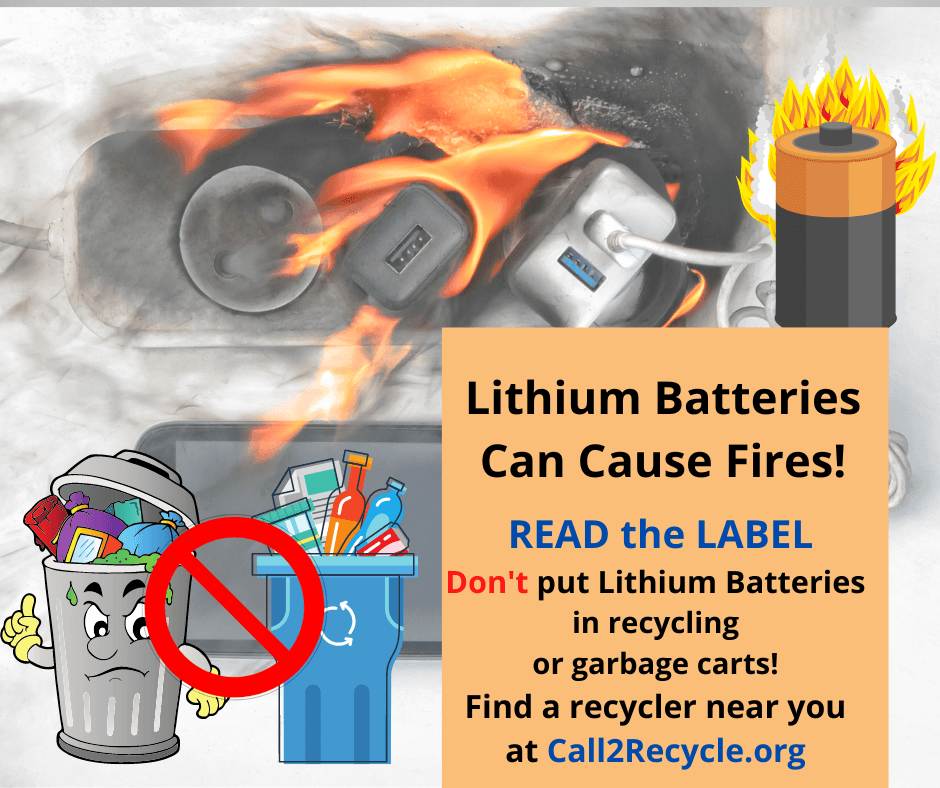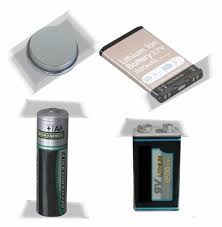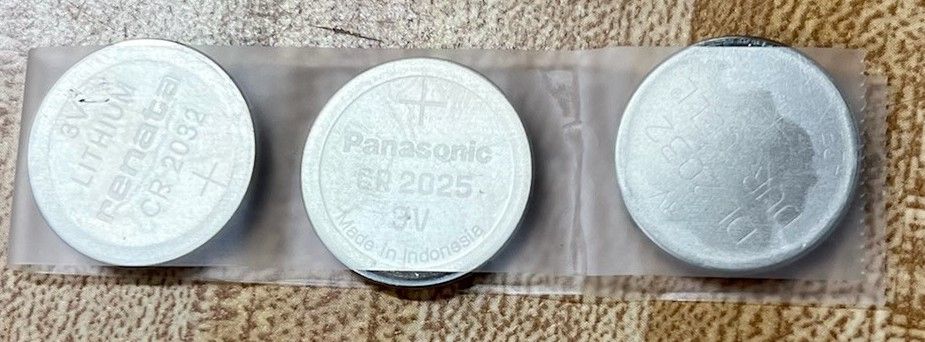According to the Illinois Environmental Protection Agency, single-use Alkaline batteries AAA, AA, C, D 6v & 9v are classified as "non-hazardous" and may be safely disposed with household trash. When possible, recycle Alkaline batteries to recover metals including zinc, manganese, brass and steel.

Lithium Primary and rechargeable Nickel Cadmium (NiCd), Nickel Metal Hydride (NiMh), and Lithium-Ion batteries contain mercury and other heavy metals and according to the IEPA, should be recycled. These batteries are found in cordless electronics like power tools, laptop and tablet computers, cell and cordless phones, as well as some toys, power banks, home security alarms, cordless vacuums, toothbrushes, and other devices that are plugged in an outlet to recharge the battery.
Because single-use Alkaline and Lithium batteries look amazingly similar, the best way to know is to read the label. To eliminate the risk of generating a spark that can cause a fire, before taking batteries to a recycling drop-off put clear packaging tape around the terminal ends of lithium primary AA, AAA, 9V, and D batteries, place coin cell batteries on clear packaging tape in a line on the top and bottom (like a sandwich), or place individual lithium and coin cell batteries in separate plastic baggies.


Call2Recycle partners with retail stores such as Best Buy, Home Depot and Lowes that accept lithium primary and rechargeable batteries only – NO alkaline batteries! Go to call2recycle.org/locator to find a location and for more information.
SWANCC sponsors a program for batteries. Check with your Village/City to see if they collect these items from residents.
Lead acid batteries such as automotive, marine and sump pump are prohibited by IL State law from being disposed of in the trash. See options for getting rid of these batteries at gas stations, auto parts stores, and other locations on SWANCC's Reuse and Recycling Directory .
Compact fluorescent light bulbs (CFLs) and fluorescent light tubes contain mercury and should not be thrown away in the garbage. They are accepted at IEPA-sponsored Household Hazardous Waste sites for recycling. Find other locations on SWANCC's Reuse and Recycling Directory .
Smoke detectors typically fall within two categories: photoelectric and ionization. It is legal to dispose of smoke detectors in a trash cart because they are not considered hazardous waste. First, remove the batteries and recycle them properly. Find a battery drop-off location at call2recycle.org/locator.
Ionization detectors contain a small amount of Americium 241, a radioactive isotope. When in use, these detectors are perfectly safe, as the radioactive material is shielded by a metal chamber inside the device. If dismantled, however, the radioactive material can become exposed. For this reason, you should never try to take apart an old ionization detector. To determine whether or not your detector is an ionization type, look on the back; it should either have the letter "I" or say ionization.
First Alert has a complimentary disposal program for up to 4 intact ionization smoke detectors (postage not included). These must be First Alert, BRK, Family Gard, or Onelink brand.
Curie includes a mail-in label with the purchase of a smoke detector.
CO Detectors
Carbon monoxide detectors can be disposed in the trash cart, but first remove the batteries and recycle them properly. Find a battery drop-off location at call2recycle.org/locator.
See SWANCC's Document Destruction page.
Find other options for paper shredding on SWANCC's Reuse and Recycling Directory .

